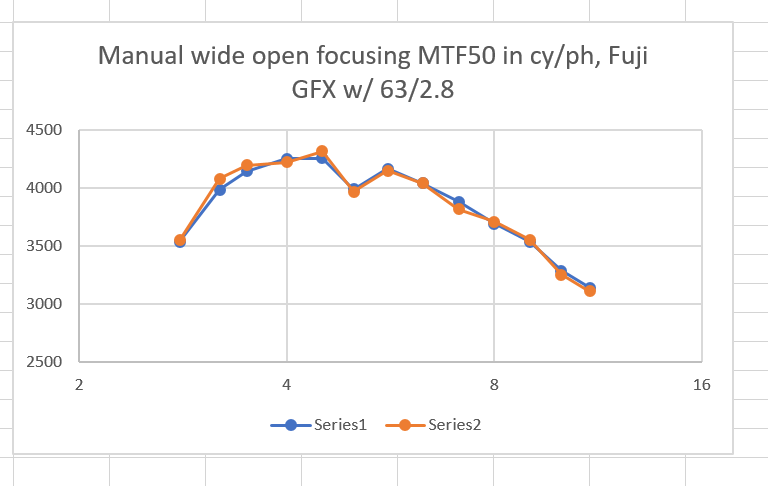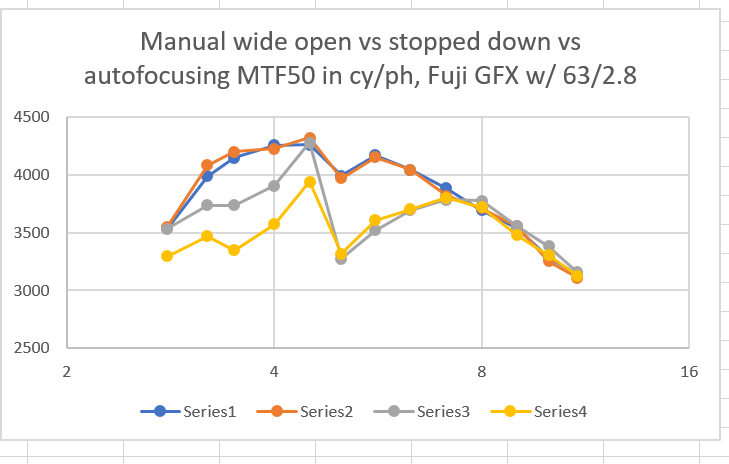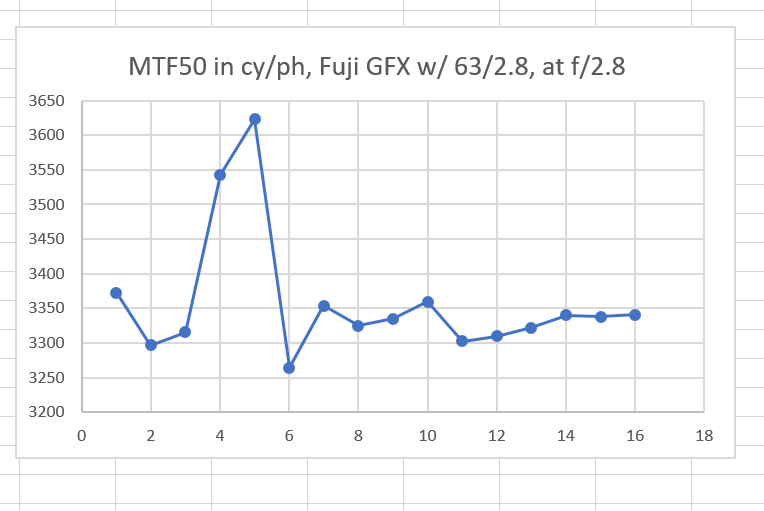This is the 37th in a series of posts on the Fujifilm GFX-50S. The series starts here.
In the previous post, I showed you this aperture series for the Fuji 63 mm f/2.8 lens focused manually wide open and then stopped down in third-stop increments:
Aside from the so-far-unexplained glitch at f/5, it looks pretty much as you’d expect.
Here’s the same test done with two other series that I threw out:
What’s going on here? First, let’s look at the grey curve. It looks like it was focused the same place as the blue and orange curves at f/2.8, but the focus position started changing as I stopped down, only to get with the program at f/4.5, and then shift away again until depth of field saved the day.
Let’s talk a bit about how I stopped the lens down. You’ve got two choices on the GFX; you can use the aperture ring on the lens, or you can set that ring to “C” and use the front fingerwheel to select stops in third-stop increments. I had noticed the focus changing after I stopped down using the ring a couple of days ago, so yesterday and today I changed my methods, set the ring to “C” and stooped down using the finger wheel. I figured that I must have inadvertently touched the focusing ring when I stopped the lens down using the aperture ring.
Switching to the finger wheel for aperture control did not make the issue go away. It seems to be more basic than that.
Now let’s look at the yellow curve I’m using magnified view with low-sensitivity peaking, and with the target I used for this series, not only is it easy to see when you’re in focus, it’s easy to see if the focus shifts. So I think that the not-completely optimal focus at f/2.8 could have been the camera shifting focus after I focused, but before I tripped the shutter. In any event, it wan’t bang on for the f/2.8 shot. However, I see no way that, no matter where the camera was focused for each curve, that I could have gotten those four shapes unless the camera/lens system is changing focus distance during the series.
The Fuji 63 uses a focus-by-wire system, and the camera’s electronics are the only thing holding the focus distance constant over time. These results, in conjunction with this earlier-posted series when the aperture didn’t change, are cause for worry:



Can you provide some ideas on how this is happening at a mechanistic level?
Not sure I understand the question. Do you mean what is happening mechanically? I can only guess.
YEs… exactly…
I’m guessing that for some reason, the camera is not providing a constant signal to the lens.
hey JIM
I’m having a similar issue with the 45-100mm.
https://www.dpreview.com/forums/post/66765884
did you find any solution or explanation for your issue since then?
cheers
Martin
No, but I’ve only observed it in testing. I use a tech camera or lenses with a mechanical helicoid when focus stability over time is required.